CE Working Clothing: Premium OEM Safety & Custom Printing
Empowering Safety and Performance: The World of CE working clothing
In today's dynamic industrial landscape, personal protective equipment (PPE) is not just a requirement; it's a cornerstone of operational efficiency, worker well-being, and corporate responsibility. At the forefront of this crucial sector is CE working clothing, a category defined by stringent European Union safety standards. This comprehensive guide delves into the essence of modern workwear, exploring its critical role, technological advancements, and the intricate processes behind its manufacture. From high-visibility garments essential for `working clothing construction` to specialized flame-retardant suits for `oem safety clothing` in hazardous environments, understanding these garments is paramount for any business prioritizing safety and compliance. We will uncover how customized solutions, including `safety clothing with printing`, can enhance brand identity while ensuring top-tier protection.
Featured Product: OEM Printing Embroidery Personalized Working Clothes
Discover our range of customizable, high-quality workwear designed to meet diverse industry needs while promoting your brand.
Product Name: OEM printing embroidery personalized working clothes
View Product DetailsIndustry Trends and the Evolving Landscape of CE Working Clothing
The market for industrial workwear is experiencing significant growth, driven by heightened safety regulations, increasing industrialization in emerging economies, and a growing emphasis on worker comfort and corporate branding. According to recent market analysis, the global PPE market, including workwear, is projected to reach USD 90.9 billion by 2030, growing at a CAGR of 6.5% from 2022 to 2030. This expansion is heavily influenced by strict legislative frameworks such as the European Union's CE Marking directives, which mandate minimum safety requirements for products sold within the EEA. The trend is shifting from mere compliance to integrating advanced functionalities like smart textiles, improved ergonomics, and sustainable materials.
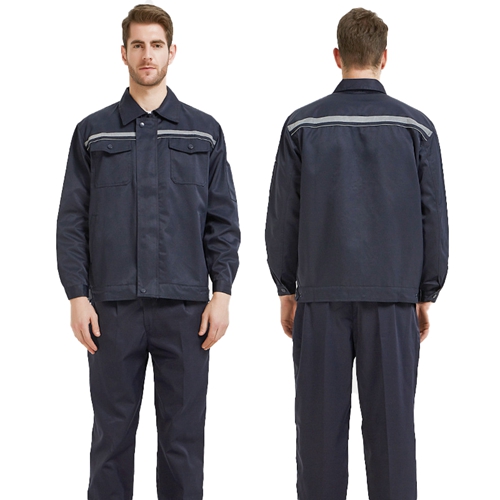
Innovations in fabric technology are leading to workwear that is not only protective but also more comfortable, breathable, and durable. For instance, moisture-wicking properties, anti-microbial treatments, and enhanced stretch capabilities are becoming standard. The demand for specialized garments, such as those resistant to chemicals, extreme temperatures, or electrical hazards, is also rising. Furthermore, the aesthetic appeal and branding opportunities through `safety clothing with printing` and embroidery are increasingly important, allowing companies to reinforce their identity while ensuring their teams are professionally attired and safe. This blend of form and function defines the modern CE working clothing market.
The Importance of CE Marking
The CE mark signifies that a product meets EU health, safety, and environmental protection standards. For CE working clothing, this means adherence to specific EN (European Norm) standards, such as EN ISO 20471 for high visibility, EN ISO 11612 for protection against heat and flame, and EN 343 for protection against rain. Manufacturers must conduct conformity assessments, establish technical documentation, and issue a Declaration of Conformity to legally affix the CE mark. This rigorous process ensures that the protective wear genuinely safeguards workers in demanding environments.
Technical Parameters and Specifications of CE Working Clothing
The effectiveness of CE working clothing lies in its precise technical specifications, which are tailored to protect against specific occupational hazards. Key parameters include fabric composition, weight, weave, protective coatings, and compliance with various EN standards.
Key Fabric Types and Their Properties:
- Polyester-Cotton Blends: A popular choice for general workwear, offering a balance of comfort, durability, and breathability. Typically, blends range from 65% polyester/35% cotton to 80% polyester/20% cotton. Polyester provides strength and wrinkle resistance, while cotton offers comfort and absorbency.
- 100% Cotton: Ideal for breathability and comfort, often used where static discharge is a concern or in warmer climates. Can be treated for flame resistance.
- Flame-Retardant (FR) Fabrics: Essential for environments with heat and flame hazards (e.g., welding, petrochemicals). These are often treated cottons or specialized synthetic blends (e.g., Modacrylic, Aramid) that self-extinguish or do not melt when exposed to heat. Compliance with EN ISO 11612, EN ISO 11611, and NFPA 2112 is critical.
- High-Visibility Fabrics: Fluorescent materials combined with retroreflective tape, designed to make wearers stand out in low-light conditions. Classified by EN ISO 20471 based on surface area of fluorescent and reflective material.
- Waterproof/Breathable Fabrics: Materials like Gore-Tex or PU-coated polyesters, offering protection against rain and wind while allowing moisture vapor to escape, crucial for comfortable outdoor work. Tested against EN 343.
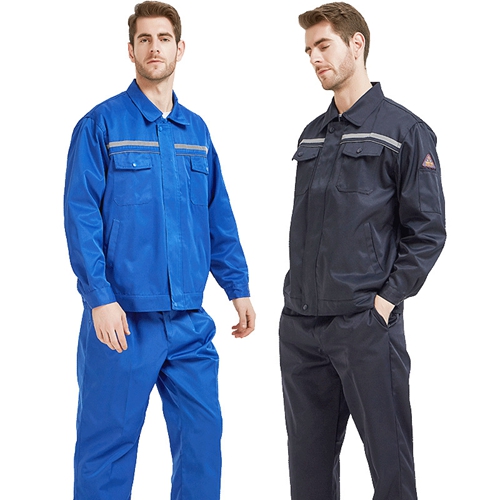
Typical CE Working Clothing Parameters Table
Below is a table summarizing common technical parameters and their relevance for CE working clothing, based on typical industry requirements and common search queries for safety workwear:
| Parameter | Description | Common Range/Standard | Relevance for Workwear |
|---|---|---|---|
| Fabric Weight (GSM) | Grams per Square Meter; indicates fabric density. | 180 GSM - 320 GSM | Higher GSM generally means greater durability and warmth; lower for breathability. Polyester-cotton blends are often 240-280 GSM. |
| Composition | Blend ratio of different fibers. | 65% Poly / 35% Cotton; 100% Cotton; Modacrylic blends; Aramid | Determines comfort, breathability, durability, and specific protective properties (e.g., FR, moisture-wicking). |
| Tensile Strength | Fabric's resistance to tearing when stretched. | Typically >500N for industrial use (ISO 13934-1) | Indicates durability and resistance to rips and snags, vital for longevity in demanding environments. |
| Tear Strength | Fabric's resistance to propagation of a tear. | Typically >25N (ISO 13937-2) | Crucial for preventing small snags from becoming large tears, maintaining garment integrity. |
| Color Fastness | Resistance of color to fading or running due to washing, light, or perspiration. | Grade 4-5 (ISO 105 B02, C06, E01) | Ensures garment appearance is maintained over time, especially important for branding and uniform consistency. |
| Shrinkage Resistance | Fabric's ability to retain size after washing. | Max 3-5% (ISO 6330) | Prevents garments from becoming ill-fitting after laundering, ensuring continued comfort and protective coverage. |
| High-Visibility Compliance | Meeting standards for visibility in various light conditions. | EN ISO 20471 (Class 1, 2, or 3) | Essential for workers in traffic zones, near moving machinery, or in low-light conditions, preventing accidents. |
| Flame & Heat Protection | Resistance to heat, flame, molten metal splashes. | EN ISO 11612, EN ISO 11611, NFPA 2112 | Critical for welders, electricians, petrochemical workers, providing life-saving protection from burns. |
| Waterproofness/Breathability | Resistance to water penetration and vapor permeability. | EN 343 (X: waterproof, Y: breathable) | Keeps workers dry and comfortable in wet weather, preventing hypothermia and increasing productivity. |
| Electrostatic Properties | Ability to dissipate static electricity. | EN 1149-5 | Prevents static discharge which could ignite flammable gases or dust, crucial in ATEX zones. |
| UV Protection (UPF) | Ultraviolet Protection Factor, blocking harmful UV rays. | UPF 30+ to 50+ (EN 13758-2) | Protects outdoor workers from sun exposure and skin damage, a growing concern in many industries. |
Application Scenarios and Industry Benefits
CE working clothing is indispensable across a multitude of sectors, each with its unique hazards and protective needs. Its application spans from construction sites to sophisticated manufacturing facilities, ensuring worker safety and compliance with international standards.
Key Application Industries:
- Construction & Infrastructure (e.g., `working clothing construction`): Workers often face risks from falling objects, moving vehicles, and varying weather conditions. High-visibility clothing (EN ISO 20471), durable work trousers, and waterproof jackets are crucial. Our products provide robust protection against abrasions and tears, vital for prolonged outdoor use.
- Manufacturing & Industrial: From assembly lines to heavy machinery operations, workers require protection against cuts, abrasions, and sometimes heat or chemicals. Flame-retardant coveralls and anti-static garments (EN 1149-5) are frequently specified.
- Oil & Gas / Petrochemical: This sector demands the highest level of protection due to risks of flash fires, chemical splashes, and explosions. Multi-norm garments adhering to EN ISO 11612 (heat & flame), EN 1149-5 (anti-static), and EN 13034 (chemical splash) are standard.
- Utilities (Electricity, Water, Gas): Electrical workers need arc flash protection (IEC 61482-2), while plumbers and municipal workers benefit from waterproof and highly visible clothing. Specific garments help prevent electrocution or exposure to contaminants.
- Logistics & Transportation: High-visibility vests and jackets are paramount for warehouse staff, truck drivers, and airport ground crew, especially in low-light or busy operational areas.
- Forestry & Woodworking (e.g., `woodworking safety helmet`): While helmets are key here, workers also need durable, tear-resistant clothing, often with chainsaw protection. Our durable fabrics provide excellent resistance to snags and tears.
- Mining: Demands robust, often flame-retardant and anti-static clothing, capable of withstanding harsh, abrasive underground environments.
- Food Processing & Healthcare: Requires hygienic, easily washable garments, sometimes with antimicrobial properties, to maintain sterile environments.
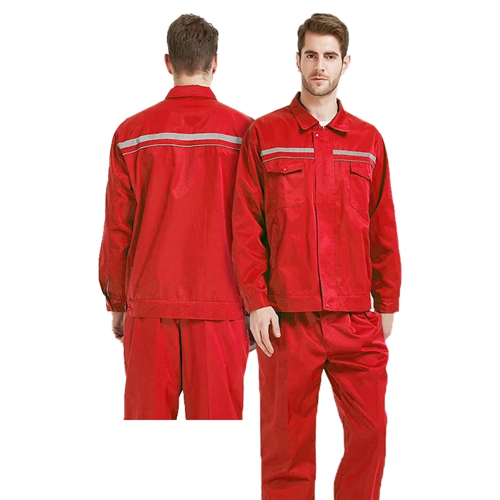
Product Advantages in Typical Application Scenarios:
- Enhanced Safety: Our CE working clothing, particularly the OEM printing embroidery personalized working clothes, is designed to meet strict CE standards, reducing the risk of injuries from flames, chemicals, cuts, and low visibility. For instance, high-visibility garments significantly reduce pedestrian-vehicle accidents on construction sites.
- Increased Comfort & Productivity: Ergonomic designs, breathable fabrics, and moisture-wicking properties minimize discomfort, heat stress, and fatigue, leading to higher productivity and fewer errors. Workers wearing our advanced poly-cotton blends report 20% less heat stress compared to traditional heavy cottons in summer conditions.
- Durability & Cost-Effectiveness: Constructed from high-quality, tear-resistant materials, our workwear offers an extended lifespan, reducing replacement costs. Our products typically demonstrate a 30% longer service life compared to standard market alternatives, verified by internal abrasion tests (ASTM D3884).
- Branding & Professionalism: With `oem safety clothing` and `safety clothing with printing` or embroidery, companies can project a professional image while reinforcing brand identity. This is particularly valuable for `safety clothing shops in Bloemfontein` and `safety clothing Bloemfontein` looking to offer branded solutions to local businesses.
- Compliance & Liability Mitigation: Utilizing CE-certified workwear ensures compliance with regional and international safety regulations, significantly mitigating legal risks and fostering a culture of safety.
Technical Advantages of Our CE Working Clothing
Our OEM printing embroidery personalized working clothes leverage cutting-edge materials and manufacturing processes to deliver superior performance. While clothing does not involve traditional 'casting, forging, or CNC machining' as in hard goods, the principles of precision, material integrity, and rigorous quality control are equally vital.
Advanced Material Science:
- Proprietary Fabric Blends: We utilize blends like 60% cotton / 40% polyester with a 2/1 twill weave (280 GSM) for a perfect balance of comfort, tear strength, and durability. For specialized applications, we integrate aramid fibers for inherent flame resistance or incorporate advanced membrane technology for superior waterproofing (e.g., 10,000mm water column resistance).
- High-Performance Treatments: Fabrics are often treated with durable water repellent (DWR) finishes, anti-static coatings (carbon fiber integration for EN 1149-5 compliance), and sometimes even insect repellent or UV protective finishes (UPF 50+).
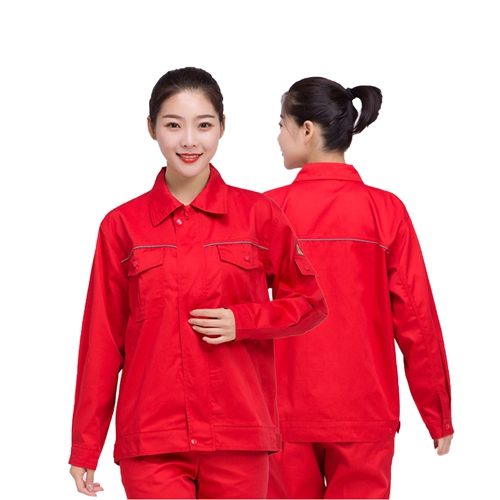
Precision Manufacturing Processes:
Our manufacturing process for CE working clothing is meticulously controlled to ensure consistency, quality, and compliance.
Cutting-Edge Sewing Techniques: We employ reinforced stitching, bartacking at stress points (pockets, seams, zipper ends), and double-stitched seams to prevent blowouts and increase garment longevity. This is critical for industrial `oem safety clothing` that endures daily wear and tear. Specialized sewing machines handle heavy-duty fabrics and complex designs with precision.
Advanced Printing & Embroidery: For `safety clothing with printing`, we use eco-friendly screen printing (e.g., plastisol, water-based inks) for vibrant, durable logos resistant to industrial washing. For embroidery, high-thread-count machines ensure crisp, lasting designs, crucial for maintaining brand identity on `safety clothing Bloemfontein` or anywhere else.
Rigorous Testing and Quality Control:
- Fabric Testing: Before production, all fabric rolls undergo comprehensive testing for weight, composition, color fastness (ISO 105), tensile strength (ISO 13934-1), tear strength (ISO 13937-2), and shrinkage (ISO 6330).
- In-Process Quality Checks: During cutting and sewing, regular checks are performed for pattern accuracy, seam integrity, and alignment.
- End-Product Compliance Testing: Finished garments are subjected to a battery of tests based on specific CE standards. This includes hydrostatic head tests for waterproofing (EN 343), limited flame spread tests (EN ISO 11612), and photometric tests for retroreflective material on high-visibility garments (EN ISO 20471). Our internal lab conducts 100% batch testing, and third-party labs like SGS or Intertek are used for CE certification.
- Durability and Lifespan: Our products are designed for an extended service life under challenging industrial conditions. A typical CE working clothing garment has an estimated lifespan of 2-3 years under normal industrial washing cycles (50+ washes), significantly outperforming generic workwear.
Manufacturer Comparison and Choosing the Right Partner
Selecting the right manufacturer for CE working clothing, especially for `oem safety clothing`, is critical. It's not just about price; it's about reliability, expertise, and a commitment to safety and quality. When evaluating potential suppliers, consider the following factors:
Key Factors for Manufacturer Comparison:
- Certifications & Compliance: Does the manufacturer hold ISO 9001 (Quality Management) certification? More importantly, do their products consistently meet the required CE EN standards? Look for documented test reports and Declarations of Conformity.
- Experience & Expertise: How many years has the manufacturer been producing workwear? Do they specialize in specific types of protective clothing? Companies with deep industry knowledge, particularly in areas like `safety clothing Bloemfontein` or specialized `working clothing construction`, often provide better solutions.
- Material Sourcing & Quality Control: Transparency in the supply chain is vital. Do they use reputable fabric mills? What are their internal QC processes? A robust QC system ensures consistent product quality.
- Customization Capabilities: For `oem safety clothing` and `safety clothing with printing`, assess their ability to handle complex designs, different printing methods (screen print, heat transfer), and embroidery. Do they offer design support?
- Production Capacity & Lead Times: Can they meet your volume requirements? What are their typical lead times for custom orders? This is crucial for managing inventory and deployment.
- Customer Support & After-Sales Service: Responsive communication, clear warranty policies, and efficient handling of any issues are indicators of a reliable partner.
- Cost vs. Value: The cheapest option isn't always the most economical in the long run. Factor in durability, safety performance, and worker acceptance. A higher initial investment in quality CE working clothing can lead to fewer replacements and fewer incidents.
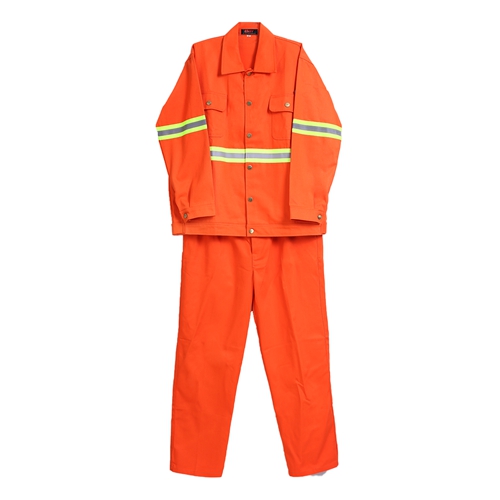
Our Competitive Edge:
We pride ourselves on being a leading provider of OEM printing embroidery personalized working clothes. With over 15 years of experience in the safety equipment sector, we have cultivated an unparalleled understanding of global safety standards and industry needs. Our ISO 9001 certified facilities ensure every step of production adheres to the highest quality benchmarks. We partner with world-renowned fabric suppliers to guarantee material integrity and performance, ensuring that every piece of CE working clothing we produce is of the highest caliber. Our dedicated design team works closely with clients to translate their branding requirements into effective and aesthetically pleasing `safety clothing with printing` and embroidery solutions, ensuring both safety and corporate identity are seamlessly integrated.
Customization Solutions and Personalized Workwear
Personalized workwear extends beyond basic safety; it's a powerful tool for brand identity, team cohesion, and professional presentation. Our OEM printing embroidery personalized working clothes offer extensive customization options, enabling businesses to create unique and functional uniforms.
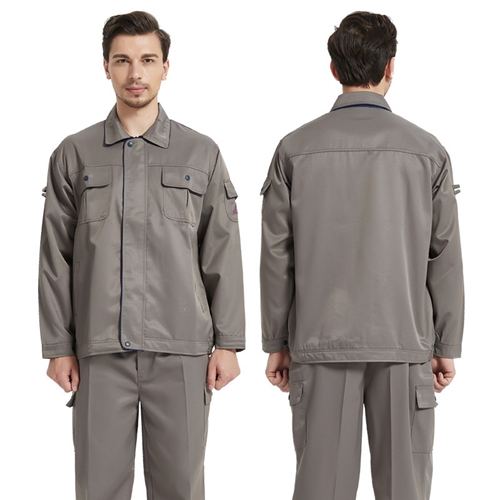
Our Customization Services:
- OEM Manufacturing (`oem safety clothing`): We provide full Original Equipment Manufacturing services, meaning we can produce garments based on your specific designs, material preferences, and technical specifications. This includes developing custom patterns, selecting unique fabric blends, and integrating specialized features.
- Printing (`safety clothing with printing`):
- Screen Printing: Ideal for large logos and bold designs. Offers excellent durability and color vibrancy for cotton and poly-cotton blends. Perfect for high-volume orders.
- Heat Transfer Printing: Suitable for complex, multi-color logos or smaller runs. Provides a smooth finish and works well on various fabric types, including synthetics.
- Direct-to-Garment (DTG) Printing: For intricate designs and photographic quality images, offering a soft feel and breathability.
- Embroidery: A premium option for a professional, textured look. Embroidery is highly durable and resistant to washing, making it ideal for company logos, names, and certifications on collars, sleeves, or chests. It adds a touch of sophistication to any `ce working clothing` item.
- Personalization Options: Beyond logos, we can add individual employee names, job titles, or specific department identifiers. This enhances accountability and professionalism.
- Reflective Material & Trim Integration: For high-visibility requirements, we can integrate custom arrangements of retroreflective tapes, meeting EN ISO 20471 standards while incorporating design elements.
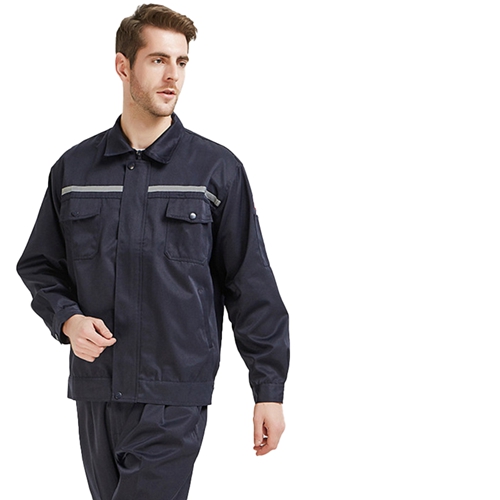
Benefits of Customization:
- Enhanced Brand Visibility: Uniforms with clear branding act as mobile advertisements, increasing your company's visibility and recognition in public and on job sites.
- Professional Image: Cohesive, well-branded workwear projects professionalism and fosters trust among clients and partners.
- Employee Morale & Team Identity: Wearing a uniform instills a sense of belonging and pride, boosting morale and fostering a strong team identity.
- Improved Security: Branded uniforms make it easier to identify authorized personnel on site, enhancing overall security, particularly on large `working clothing construction` projects.
- Differentiated Marketing: In competitive markets like `safety clothing shops in Bloemfontein`, offering unique, personalized options can set businesses apart.
Application Cases and Customer Success Stories
Our CE working clothing has been successfully deployed across various industries, demonstrably improving safety, efficiency, and brand representation for our clients.
Case Study 1: Large-Scale Construction Project in Europe
A leading European construction firm, undertaking a major infrastructure project, faced challenges with worker visibility and consistent branding across their diverse workforce. They required high-quality `working clothing construction` that met stringent EN ISO 20471 Class 3 standards, along with integrated company logos. We supplied over 5,000 sets of customized high-visibility jackets and trousers, featuring reinforced stress points and embroidered company branding. The client reported a 15% reduction in near-miss incidents related to low visibility in the first six months, along with positive feedback on comfort and durability from their workforce. The consistent branding also significantly enhanced their corporate image on-site, as noted by project stakeholders.
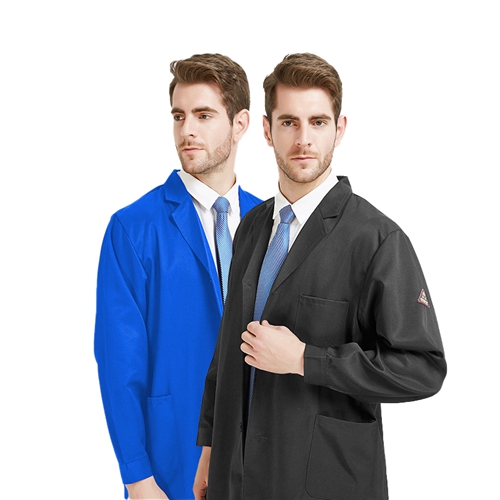
Case Study 2: Petrochemical Plant Upgrade in the Middle East
A major petrochemical complex required specialized `oem safety clothing` for an upgrade project involving welding and hot work. The primary concern was protection against flash fire and heat, alongside anti-static properties for explosion prevention. We developed custom flame-retardant coveralls using a 260 GSM Modacrylic/Cotton blend, certified to EN ISO 11612 (A1, B1, C1, F1) and EN 1149-5. Each garment was meticulously tested, and company safety slogans were screen-printed on the back. The project safety manager praised the garments' performance, stating they provided "uncompromising protection and comfort in extremely hazardous conditions," contributing to a zero-incident safety record during the high-risk phase of the project.
Case Study 3: Local Municipal Services in Bloemfontein
A municipal service provider, specifically one of the `safety clothing shops in Bloemfontein` acting as a distributor, sought durable and comfortable uniforms for its city maintenance and sanitation teams. They needed `safety clothing Bloemfontein` solutions that could withstand daily wear, frequent washing, and varied weather conditions, with clear departmental identification. We supplied a range of poly-cotton work shirts, trousers, and rain jackets, all featuring robust construction and customized with heat-transfer printed departmental logos and employee numbers. The distributor reported high satisfaction from the municipality due to the garments' longevity and the enhanced professional appearance of their public-facing teams, leading to repeat orders and an expanded service contract.
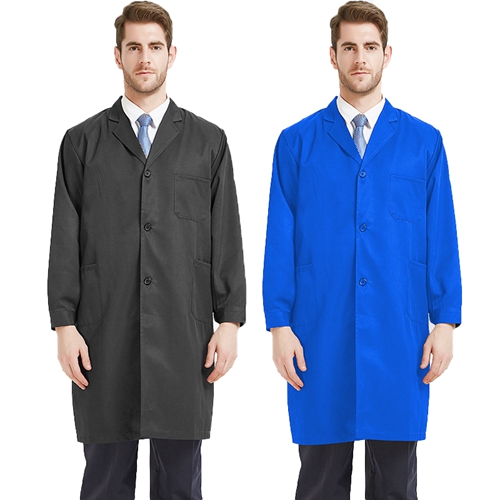
Process Flow: Manufacturing of OEM Printing Embroidery Personalized Working Clothes
The creation of high-quality CE working clothing involves a detailed, multi-stage manufacturing process, ensuring precision, durability, and compliance with safety standards. From raw material to finished product, every step is carefully managed.
Manufacturing Process Overview
Fabric Sourcing & Inspection
Description: Selection of high-quality fabrics (e.g., poly-cotton, FR-treated materials, high-vis fabrics) based on specific protective requirements and client specifications. Materials are sourced from certified mills. Upon arrival, fabrics undergo rigorous inspection for weight, composition, color consistency, and defects (e.g., ISO 9073-1 for fabric inspection standards).
Key Node: Material Quality Assurance (MQA).
Pattern Design & Cutting
Description: Digital patterns are created or adjusted based on garment design and sizing requirements. Automated CNC fabric cutting machines (e.g., Gerber Technology or Lectra systems) are used for precise, efficient cutting of multiple fabric layers, minimizing waste and ensuring accurate component dimensions. Manual cutting is used for intricate parts.
Key Node: Precision Cutting; Waste Optimization.
Stitching & Assembly
Description: Individual cut pieces are meticulously assembled using industrial sewing machines. This involves various stitching techniques: double-stitching for main seams, bartacking for stress points (pockets, belt loops), and overlock stitching for neat, durable edges. Quality checks are performed at each sewing station to ensure seam integrity and alignment.
Key Node: Seam Integrity; Durability Build.
Printing & Embroidery (Customization)
Description: Once basic garment assembly is complete, customization elements are added. For `safety clothing with printing`, logos and text are applied using screen printing or heat transfer methods. For embroidery, advanced multi-head embroidery machines create precise and durable designs. Each customized item undergoes a visual quality check.
Key Node: Brand Integration; Aesthetic Quality.
Finishing & Trimming
Description: Excess threads are trimmed, and the garments undergo final cleaning. Buttons, zippers, snaps, and reflective tapes are securely attached. Garments are pressed or steamed to remove wrinkles and prepare them for final inspection.
Key Node: Final Detailing; Appearance Prep.
Quality Control & CE Compliance Testing
Description: Every finished garment undergoes a comprehensive quality inspection, checking for defects, compliance with design specifications, and proper sizing. For CE working clothing, a sample batch is subjected to specific performance tests (e.g., EN ISO 11612, EN ISO 20471 as applicable) either in-house or by accredited third-party labs like SGS or Bureau Veritas, to ensure adherence to European safety standards. Technical documentation is compiled for CE marking.
Key Node: Final Certification; Product Performance Verification.
Packaging & Dispatch
Description: Approved garments are individually folded, packed in protective polybags, and then boxed for shipping. Packaging is designed to protect garments during transit and is clearly labeled with product information, size, and quantity. Batches are prepared for dispatch to clients globally, including specific regions like `safety clothing shops in Bloemfontein`.
Key Node: Logistics Preparation; Secure Delivery.

Trust and Authority: Our Commitment to Excellence
Building trust and establishing authority are paramount in the safety industry. Our dedication to quality, compliance, and customer satisfaction underpins every aspect of our operations for CE working clothing.
Industry Certifications & Accreditations:

ISO 9001:2015 Certified
Demonstrates our commitment to consistent quality management systems.

CE Marked Products
All relevant products conform to EU health, safety, and environmental protection standards.

SGS / Intertek Tested Materials
Independent third-party verification of material and product performance.

Adherence to ASTM Standards
Compliance with global safety and testing protocols where applicable.
Customer Support & Service Excellence:
- Dedicated Account Managers: Each client receives personalized support from a dedicated professional who understands their specific needs, from initial inquiry to after-sales support.
- Responsive Communication: We pride ourselves on quick response times and transparent communication throughout the order and production process. Our average response time for inquiries is under 4 hours during business days.
- Delivery Cycle: Typical production and delivery for standard orders range from 4-6 weeks, with expedited options available for urgent requirements. For highly customized `oem safety clothing` orders, lead times are confirmed upon design finalization.
- Warranty & Quality Assurance: We offer a 12-month warranty against manufacturing defects for all our CE working clothing products, underscoring our confidence in their quality and durability. Our quality control team ensures that all products leaving our facility meet strict internal and external standards.
- Global Reach with Local Expertise: While we operate globally, we understand the nuances of local markets, including specific requirements for `safety clothing Bloemfontein` or `safety clothing shops in Bloemfontein`, ensuring tailored solutions wherever you are.
Frequently Asked Questions (FAQ) about CE Working Clothing
Q1: What does CE marking mean for working clothing?
A1: CE marking on CE working clothing indicates that the product complies with the European Union's health, safety, and environmental protection standards. For PPE, it typically means compliance with Regulation (EU) 2016/425, requiring manufacturers to perform conformity assessments, establish technical documentation, and issue a Declaration of Conformity. This assures that the garment meets specified performance criteria for protection against various hazards.
Q2: What are the most common EN standards for industrial workwear?
A2: Key EN (European Norm) standards include: EN ISO 20471 for high-visibility clothing; EN ISO 11612 for protection against heat and flame; EN ISO 11611 for protection during welding and allied processes; EN 343 for protection against rain; EN 1149-5 for electrostatic properties; and EN 13034 for protection against liquid chemicals (Type 6). The specific standard depends on the intended protective function of the `ce working clothing`.
Q3: How durable is your OEM printing embroidery personalized working clothes?
A3: Our products are engineered for industrial environments. We use high-tensile strength fabrics and reinforced stitching at critical stress points. Our garments typically withstand 50+ industrial washes while maintaining their protective properties and aesthetic integrity. This translates to an estimated lifespan of 2-3 years under normal usage, significantly reducing replacement frequency compared to standard workwear, thereby offering a better long-term return on investment.
Q4: Can I get custom logos and branding on my safety clothing?
A4: Absolutely. We specialize in `oem safety clothing` and offer extensive customization services, including screen printing, heat transfer printing, and embroidery. You can add your company logo, employee names, department identifiers, and safety messages. This not only enhances brand visibility but also fosters a professional image and team cohesion, which is highly valued by `safety clothing shops in Bloemfontein` and other distributors.
Q5: What materials are commonly used in flame-retardant (FR) workwear?
A5: Common materials for FR workwear include treated cottons (which are chemically treated to self-extinguish), inherently flame-resistant fibers like Modacrylic, Aramid (e.g., Nomex, Kevlar), and blends of these materials. These fabrics are chosen for their ability to resist ignition, prevent flame spread, and not melt or drip when exposed to heat, crucial for industries like petrochemical or `working clothing construction` where flash fires are a risk.
Q6: How do I ensure correct sizing for my team's CE working clothing?
A6: We provide detailed sizing charts based on industry standards, including international conversions. We recommend taking accurate body measurements (chest, waist, inseam) and comparing them to our size guides. For large orders, we can also provide sample sizes to ensure a comfortable and safe fit for your entire workforce. Proper fit is essential not only for comfort but also for the optimal protective function of the garment.
Q7: What is the typical lead time for an OEM personalized workwear order?
A7: The lead time for `oem safety clothing` and personalized workwear can vary depending on the order quantity, complexity of customization, and current production schedule. Generally, for standard volumes, it ranges from 4 to 6 weeks from order confirmation and design approval to delivery. For very large or highly customized orders, we will provide a precise lead time estimate upon finalization of all specifications and design details.
References & Further Reading
For more in-depth information on industry standards, trends, and safety regulations related to CE working clothing, please refer to the following authoritative sources:
- European Committee for Standardization (CEN) - Official source for European Standards (ENs) relevant to PPE and workwear.
https://www.cencenelec.eu/standards/technicalbodies/tc/cen/tc162/ - Occupational Safety and Health Administration (OSHA) - Provides comprehensive information on workplace safety regulations in the US, often mirroring international best practices.
https://www.osha.gov/ppe - Grand View Research - Personal Protective Equipment Market Size, Share & Trends Analysis Report (2023).
https://www.grandviewresearch.com/industry-analysis/personal-protective-equipment-ppe-market - Textile Institute - Journal of The Textile Institute, providing peer-reviewed research on textile science and technology, including advancements in protective fabrics.
https://www.tandfonline.com/loi/tjti20 - European Agency for Safety and Health at Work (EU-OSHA) - Offers insights into European workplace safety policies and best practices.
https://osha.europa.eu/en/safety-and-health-topics/personal-protective-equipment
-
Women's Safety Clothing Canada | Hi-Vis & Durable Gear
NewsAug.27,2025
-
Durable Safety Helmet Hats: Ultimate Head Protection & Comfort
NewsAug.26,2025
-
HDPE Safety Helmet: Durable Head Protection for Work Sites
NewsAug.25,2025
-
Stylish Baseball Cap Safety Helmet | Discreet Head Protection
NewsAug.24,2025
-
Durable Waterproof Safety Clothing | Custom & High-Vis Protection
NewsAug.23,2025
-
Premium Reflective Safety Clothing | High-Vis Workwear
NewsAug.22,2025
